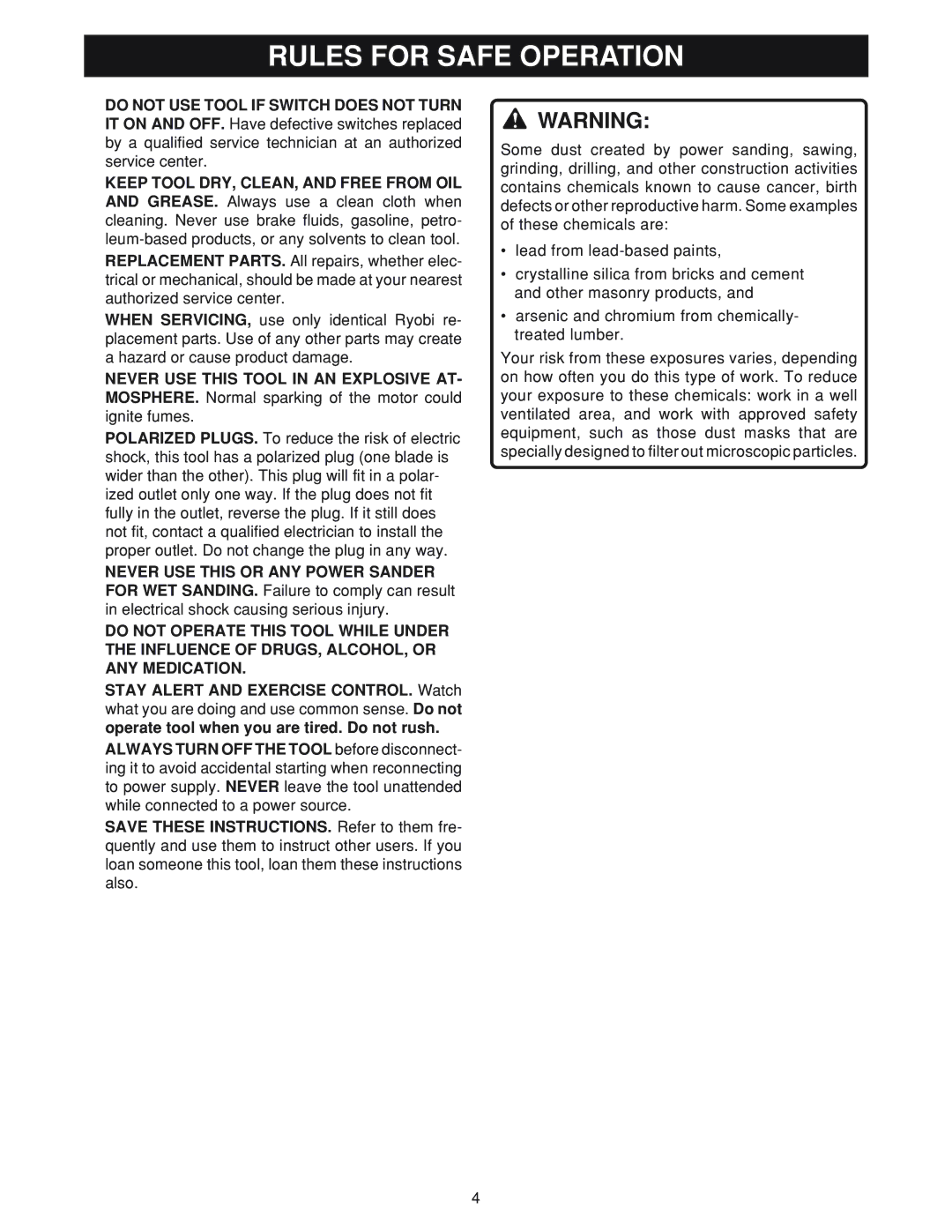
RULES FOR SAFE OPERATION
■DO NOT USE TOOL IF SWITCH DOES NOT TURN IT ON AND OFF. Have defective switches replaced by a qualified service technician at an authorized service center.
■KEEP TOOL DRY, CLEAN, AND FREE FROM OIL AND GREASE. Always use a clean cloth when cleaning. Never use brake fluids, gasoline, petro-
■REPLACEMENT PARTS. All repairs, whether elec- trical or mechanical, should be made at your nearest authorized service center.
■WHEN SERVICING, use only identical Ryobi re- placement parts. Use of any other parts may create a hazard or cause product damage.
■NEVER USE THIS TOOL IN AN EXPLOSIVE AT- MOSPHERE. Normal sparking of the motor could ignite fumes.
■POLARIZED PLUGS. To reduce the risk of electric shock, this tool has a polarized plug (one blade is wider than the other). This plug will fit in a polar- ized outlet only one way. If the plug does not fit fully in the outlet, reverse the plug. If it still does not fit, contact a qualified electrician to install the proper outlet. Do not change the plug in any way.
■NEVER USE THIS OR ANY POWER SANDER FOR WET SANDING. Failure to comply can result in electrical shock causing serious injury.
■DO NOT OPERATE THIS TOOL WHILE UNDER THE INFLUENCE OF DRUGS, ALCOHOL, OR ANY MEDICATION.
■STAY ALERT AND EXERCISE CONTROL. Watch what you are doing and use common sense. Do not operate tool when you are tired. Do not rush.
■ALWAYS TURN OFF THE TOOL before disconnect- ing it to avoid accidental starting when reconnecting to power supply. NEVER leave the tool unattended while connected to a power source.
■SAVE THESE INSTRUCTIONS. Refer to them fre- quently and use them to instruct other users. If you loan someone this tool, loan them these instructions also.
![]() WARNING:
WARNING:
Some dust created by power sanding, sawing, grinding, drilling, and other construction activities contains chemicals known to cause cancer, birth defects or other reproductive harm. Some examples of these chemicals are:
•lead from
•crystalline silica from bricks and cement and other masonry products, and
•arsenic and chromium from chemically- treated lumber.
Your risk from these exposures varies, depending on how often you do this type of work. To reduce your exposure to these chemicals: work in a well ventilated area, and work with approved safety equipment, such as those dust masks that are specially designed to filter out microscopic particles.
4
